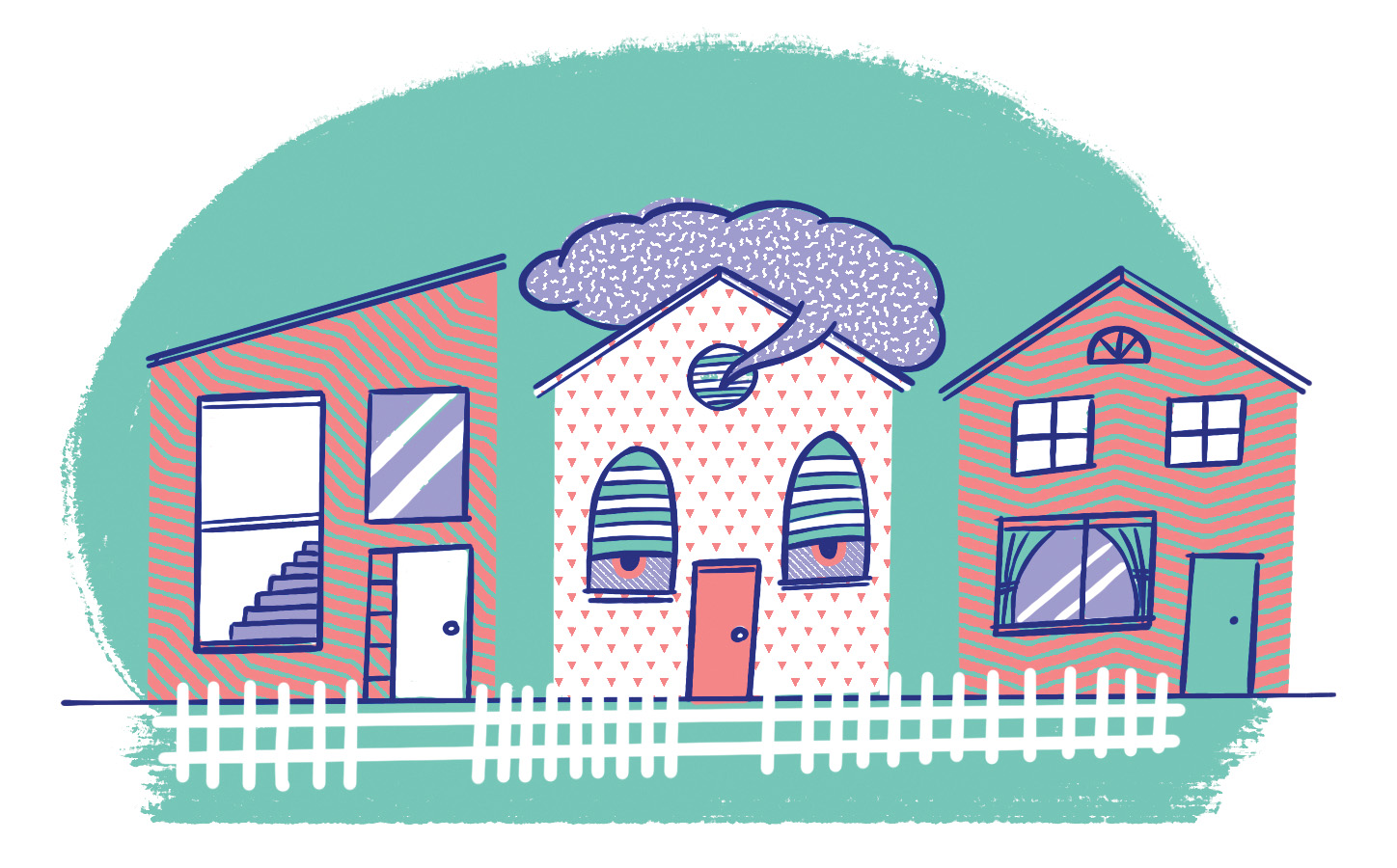Cannabinoids. Hydroponics. Indica, kief. Backcrossing, bongs, blunts, bowls, bubblers and borosilicate: Ten years ago, if you knew someone who could use those words in the same sentence, chances are that person owned a shady-looking backyard shack you weren’t allowed to open and held an inordinate interest in LED lights and Rubber Soul.
Today, that person could be Jim Hole, the son of former Lieutenant-Governor and legendary horticulturalist Lois Hole. “It’s not just the THC, which is the psychoactive side, and the CBD, the medicinal side,” Hole says, so exuberant it sounds like he’s racing to get his words out. We’re sitting in St. Albert’s Enjoy Centre, surrounded by a coffee shop, an organic grocer and a floral studio – not exactly third row at a Grateful Dead concert. Yet Hole, who says he’s never smoked, vapourized or ingested marijuana, is eager to talk about the drug – or, at least, the plant. “What we’re really excited to learn about is the terpenes in the crop,” he continues, “which are what would make a lemon smell like a lemon.”
Hole’s Greenhouses and Gardens has partnered with Atlas Growers to grow medical marijuana, and Hole is taking the role of Vice President of Cultivation. Atlas is a relatively new licensed producer that’s constructing a 38,000-square-foot facility in Lac Ste. Anne County northwest of Edmonton, with more than $6 million in ATB Financial seed money. ATB Financial is a Crown Corporation, which means that not only is the Hole family investing in marijuana, so is the man. How far we’ve come since then-Prime Minister Stephen Harper said, in 2015, that marijuana was “infinitely worse” than tobacco, which kills seven million people globally every year, according to the World Health Organization.
To anyone following the push for the legalization of the recreational use of marijuana – medical use has been permitted in Canada since 2001 – the coupling of the Hole family name and the drug behind “reefer madness” might be entirely expected and still a bit surprising. Before the smoke could clear after Justin Trudeau was elected, cannabis culture went from being the outcast to the envy of suit-and-tie wearing financiers. It also went from being seen as a criminal issue to a public health one. Canopy Growth Corporation, with the largest market capitalization of any cannabis company in Canada ($6.3 billion), has in its management team top brass from companies like Molson Coors, Pfizer and BlackBerry. Still, the Hole-Atlas partnership might have never happened – various companies had approached Hole and weren’t the right fit. It’s a testament to how far the industry has come, and how far it has brought social norms along with it, that it did.
For many people, it was the medicinal side of things that sealed the deal. Hole says he saw how profoundly it impacted the lives of suffering people who otherwise had to turn to harder, more debilitating medicine. It dovetails with so much of his mother’s beliefs – there’s a hospital named after her, after all. “Mom was a very liberal-minded person, and she wasn’t scared of controversy,” Hole says. “If anybody ever thinks she would have been horrified by this decision, they’d be 100 per cent wrong.” After years of dinner-table conversations, Jim Hole finally gets to treat marijuana as just another plant. If that’s not change, what is?
No, you shouldn’t go to work high. You shouldn’t smoke weed on your lunch break. And you could still get fired for recreational use on your own time.
Serious question, though: How will marijuana legalization change our workplaces? That’s where Alison McMahon comes in. She’s the founder and CEO of Cannabis at Work, the country’s first cannabis-focused HR company. Prior to Cannabis at Work, she had an HR consulting practice, then an HR tech startup. “I realized there is a workplace issue here that needs to be solved, and an opportunity,” McMahon says. “Once I got past my fears of complete career suicide and being labelled ‘the crazy HR weed lady,’ I started to see some natural momentum.”
McMahon says her work addresses a friction between occupational health and safety legislation and human-rights legislation. That includes the need to maintain a safe workplace and following human-rights legislation, which states that employers have a duty to accommodate employees who have medical issues. What people get hung up on is that employers only have a duty to accommodate up to the point of undue hardship. “The duty to accommodate doesn’t mean you have to accommodate impairment,” McMahon explains. “It means you’re trying to figure out how you restructure this person’s role so that they can come to work unimpaired and still maintain meaningful employment.”
Medical users don’t always need to consume marijuana during work hours, she says; a [patient] might only need it for falling asleep. With a physician’s help, employers can accommodate their employees. Much of what McMahon deals with, however, has to do with correcting miseducation. “People who aren’t educated about cannabis might think that if someone uses cannabis in any part of their life, that they’re going to be high all the time,” she says. “There’s a body of work that employers have to understand, and frankly they’d prefer not to. But that body of work is no different than if somebody is on another kind of medication. It’s the same process, and we’ve dealt with this before. It’s just the stigma makes people a bit blind to how straightforward this can be.”
I know what you’re really wondering, though: Can you get stoned at the company Christmas party? McMahon laughs. “The approach has to be consistent with [the company’s] overall policy and philosophy towards alcohol,” she says. “But if we’re talking about a non safety-sensitive company, then, as devil’s advocate, we have to look past the stigma.” Maybe check with your boss first.
For the most part, Edmontonians accept the economic benefits of marijuana legalization. They know that sending people to prison over possession probably isn’t the best use of public funds. And they’ve grown accustomed to the annual 4/20 celebrations at the Legislature Building. What Edmontonians are worried about is how marijuana will change their neighbourhoods – and whether their kids will be safe from it.
For the last three years Colton Kirsop, a senior planner in the zoning and bylaw team at the City of Edmonton, has managed these kinds of changes. That means he helped to prepare a public engagement plan, receive stakeholder input and make decisions about where cannabis retailers can be located, how far they have to be from schools (200 metres) and so on. “But we don’t set the social agenda,” he says. “We respond to it. We want to understand where Edmontonians are in terms of their comfort level and their expectations.”
The City has three priorities, as informed by the public: to set up a system that protects the health of citizens and encourages public health and safety, to be business-friendly, and to create a balanced approach to community livability. There will be hiccups, of course, particularly since many cannabis products have yet to be legalized. Will landlords ban it from their buildings? Will people grow weed in their homes en masse? Will there be designated public consumption spaces? The jury is out on some of these questions, but the City is certainly asking. With a kind of live-and-let-live attitude, much of the responsibility will come down to Edmontonians themselves, not their elected representatives. “Potentially, if we see an increase in the usage of cannabis and there’s some openness around what our communities’ expectations are, there might be a high level of compliance with the laws,” Kirsop says. “I think that’s where the social norms come in. Once we have a bylaw framework in place that sets the tone, hopefully users will consider their impact on others before they make a decision about where to have a joint.”
That gets to one of the most promising things about cannabis legalization: In an era of fever-pitch partisanship, both left and right are mostly in agreement, and they understand the issue’s nuances and complexity. “It seems like the public has really thought through this issue,” Kirsop adds, noting that the City will revisit the issue after legalization. Look how much easier things are when both sides come together. That’s what weed’s for, isn’t it?
The idea of marijuana tourism – everything from a natural increase in tourism numbers to specific cannabis-themed adventures – taunts any jurisdiction on the verge of legalization. But it’s more complicated than you might think. In the United States, states that have legalized marijuana have seen an uptick in hotel bookings, and there are countless agencies that cater to enthusiasts and educate on customs and laws unique to each destination. (California offers wine-and-cannabis pairings for medical users, and Denver has a well known “bud and breakfast.” ) Still, it could be no more than a novelty: When it’s legalized more broadly, people will likely travel smaller distances just for the weed. Edmonton Tourism declined to comment on the topic, so no word whether “Take a puff: It’s the most Edmonton thing you can do” will become a new slogan.
“Mom and Dad, I’ve got to tell you something.”
Frederick Pels was sitting before his parents, conservative Russian immigrants, and preparing for “the talk.” He was so nervous, he shook.
“I sell marijuana,” he said.
He waited for the axe to fall.
“Can we have some?” they asked.
This might have gone differently for Pels if he was, say, 16 years old, but Pels – a full-grown adult – was about to open a new storefront for his company, The Green Room. The store is just a few steps south of Whyte Avenue, and you can’t miss it; soft green lights highlight a modern storefront full of open space and clean lines, almost like the lobby of a hip new hotel. It’s deliberate; The Green Room wants to be a good neighbour. “There’s no smoking anywhere near the property,” Pels says. It certainly looks like the kind of place your conservative parents might wander into. And the fact that they were so open to his new career path speaks volumes about who the industry is now trying to cater to.
Pels has experience in an array of different businesses – when he was 14 years old he sold tombstones – so he comes prepared to an industry that’s not only new but was still, before July, technically, illegal. In British Columbia, where the company began, The Green Room actually sells cannabis; in Alberta, without the tacit acceptance of law enforcement, it simply provides information and resources in the meantime, getting ready for the day it can sell cannabis products. His parents’ conservatism has prepared him well for Alberta’s, too: One Deloitte report found that Alberta was the only province with more people who opposed legalization than supported it. Now, the hard part will be selling the product amid so much competition. Talking to his parents might have been the easy part.
Cannabis will definitely change the retail landscape. But it’s more than just aesthetics. The industry has grown up and has to meet its consumers’ needs, so companies like The Green Room are marketing their stores and brands as part of a healthy lifestyle, something to integrate into your routine between yoga and bike rides. Some business owners have raised Alberta’s deep-rooted conservatism as a potential obstacle to this. But Alberta’s conservatism today has more to do with a kind of unabashed celebration of the free market. Combine that with our agricultural history, and it makes sense that we could be home for the burgeoning cannabis industry, which pushes the limits of both agriculture and the free market.
“It’s a crazy societal shift,” Pels says. “In some ways, it’s not even just about pot.” He cites edibles, oils and shatters, products that won’t be available as soon as recreational marijuana is legalized. “It’s a similar path to [the one] after alcohol prohibition,” he continues. “Now we have craft beer, we have imported alcohol, and it’s evolved. It didn’t evolve as quickly as I’m sure a lot of people wanted it to, and, for the cannabis industry to be successful, it’s going to have to evolve a heck of a lot faster, because there’s a rampant black market.”
In the meantime, he says, it’s the role of companies like his to prove themselves as legitimate voices. So far, it’s working, because there’s a clear demand for both the product itself and information around it. Some, like Pels, say the example they set – what a retailer could look and act like – was a key contributor to the province choosing to go down the private-retailer model rather than the public model, like Ontario.
” [The cannabis industry] really started buttoning up and creating a sense of community and respect,” he says. Pels says he used to have long hair, hearkening back to stereotypical cannabis culture. Before opening The Green Room, he got it cut. “Right around that time, the industry got a haircut, too.”
This article appears in the July 2018 issue of Avenue Edmonton















